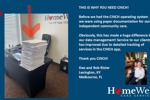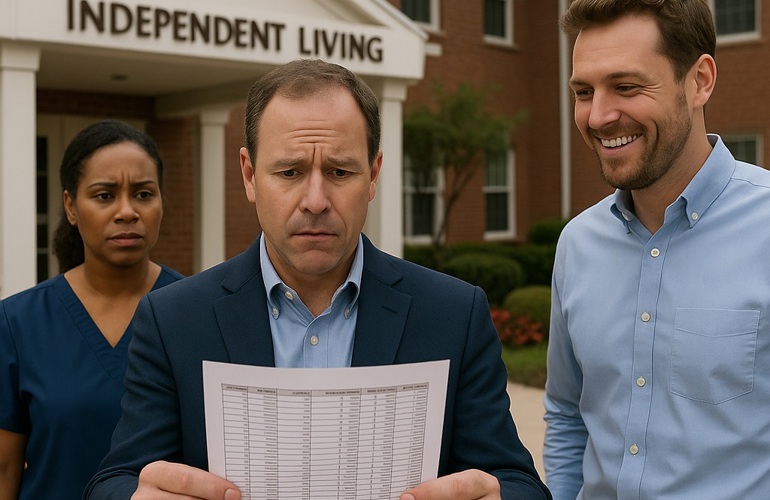
How to Crack the Community Care


For Home Care Agency Owners, Community Care Coordinators, Nurses, Admin (billing)
Introduction: Welcome to the Deep End
This isn’t theory—it’s our real-life story.
We had just interviewed with a Senior Living community to replace a struggling home care agency. They were caring for 30+ residents and promised a decision in 30 days.
A week later—three days before Thanksgiving—we got the call: “Can you be here tomorrow at noon? We’re introducing you as the new agency.”
It felt like we hit the jackpot. The outgoing agency owner handed us a spreadsheet of clients, care needs, and a list of caregivers we could hire. When we asked why he was leaving, his answer:
“Too much of a pain to manage. The caregivers, the care, the scheduling—it’s not worth it.”
Red flags were everywhere. But we dove in.
We hosted a meet-and-greet at the community. The residents’ expressions said it all—“Here comes the next victim.” Gina, CINCH CCM Co-Founder and our then agency RN, started assessments and care plans. I scrambled to recruit a core team. By Thanksgiving, we were live.
90 Days Later:
Revenue looked strong. I was feeling optimistic. Then Gina (RN) my wife and co-founder of our former agency and CINCH CCM turned to me and said: “I think we’re going to have to pull out.”
The problem? Problems—plural. We lacked the right tools, processes, and structure. Traditional home care systems didn’t support the fast-paced, team-based, short-visit model needed in IL communities. Caregivers weren’t cohesive. Clients weren’t fully satisfied. We were duct-taping operations daily.
The Real Problem: Fractional, Community-Based Care Is a Different Business
We were trying to manage short visits, a mobile workforce, and evolving needs—using systems designed for 1:1 traditional care. We were documenting on paper. Scheduling manually. Teamwork among caregivers? Sporadic. We lacked the right tech, processes, and care model.
One Year Later:
We turned it around—new technology (CINCH CCM), clear roles, a defined care model, happy clients, and most importantly, a sustainable pricing structure.
---
Present Day: What We Learned
If someone tells you there are 5 easy steps to succeed in IL community care—run (note: we have 7). Every community is different. Some transitions are gradual. Ours was an emergency. Think MASH unit: stabilize first, then rebuild.
Here’s our “Now What” Playbook to help you succeed from Day 1:
1. Set Clear Expectations Early
Before anything else, align with three core audiences:
· The Executive Director and IL staff
· Residents (your clients)
· Family members
Establish how care will be delivered, how communication works, how to handle cancellations and on-call needs.
Follow this mantra:
Under-commit. Over-deliver.
---
2. Conduct a Quick Community Needs Assessment
With leadership support, survey residents and families. Learn:
· Are they happy with current care?
· What services would be helpful?
· How often would they want them?
Use digital tools if you can; paper for residents may be helpful.
---
3. Define Your Services and Pricing—Carefully
Don’t copy the outgoing agency’s flyers. Learn from them. Chances are their pricing or service model contributed to their failure.
If you need to increase prices or switch to a simpler, time-based model—do it upfront. Just be prepared to explain why, with a focus on caregiver quality and sustainability.
Create two simple one-pagers:
· Client-facing: Focus on how your services help them live independently and comfortably.
· Community-facing: Highlight the operational value you bring to staff and the community.
Get professional help with messaging and test it before going live.
---
4. Choose the Right Technology
Traditional home care tech won’t cut it. You’re managing many clients across one building, often with overlapping visits. You need:
· Flexible, real-time scheduling
· Team visibility and communication tools
· Care documentation that’s mobile and fast
Your caregivers need to work as a team, not in silos.
Bonus if your system allows caregivers to help each other when delays ripple across schedules.
---
5. Align Your Staffing and Metrics
This is a different business line—treat it that way.
Define key roles:
· Community Care Coordinator: A scheduler who knows the residents and caregivers intimately.
· Caregivers: Outgoing, team-oriented people who like fast-paced work. Designate leads who can manage the floor.
· Nurses: Depending on the state, the nurse will assess community care clients, and the assessment process can differ somewhat from that of traditional in-home clients.
· Admin: Billing and ops team that understands how community care differs.
Track key metrics:
· Gross profit
· Caregiver utilization (% of actual caregiver client service visit time vs. scheduled total shift time)
· Staff and client satisfaction
· Property staff satisfaction
---
6. Build a Clear Transition Plan (If Replacing an Agency)
The Executive Director will ask: “What’s your plan?”
Include:
· Complete steps 1–5
· Communicate the timeline to assess all clients and build care plans
· Describe your staff roles and responsibilities
· Discuss how you will educate residents and families about your services
· Discuss communication policies and procedures
You may get the outgoing agency’s care plans—but treat them as reference only. Your team must create fresh, actionable plans before starting services.
---
7. Launch with Purpose
Before going live, host two key events:
1. Community Meet & Greet: Introduce caregivers. Wear uniforms. Share your office location and communication process. Let residents ask questions.
2. Family Orientation (online or in person): Introduce your team, explain your services, and answer the most common questions:
· What’s included?
· How do residents sign up?
· How does billing work?
Once complete - congratulations, you’re ready to launch.
---
Call to Action
If you’ve been handed “the spreadsheet” and are unsure what to do—or tried and struggled—let’s talk.
We’re offering a FREE 30-minute session to help you avoid missteps, answer your questions, and share what worked (and didn’t) in our journey.
Interested in a deeper partnership? Explore our CINCH Home Care Inside IL (HCI) Consulting Services, built to help home care agencies find, launch, and thrive in community-based care.
Thank you for the important work you do to help older adults age in place - with dignity, joy and support.
| 1 | Home page |
| 2 | What's new |
| 3 | Login |
| 4 | Search |
| 5 | Registration |
| 6 | FAQs |
| 7 | Contact form |
| 0 | Access key details |